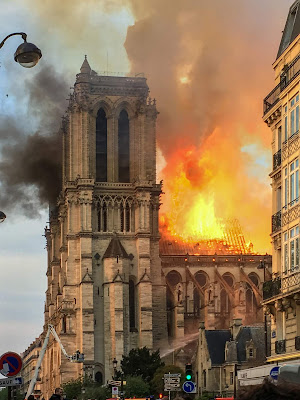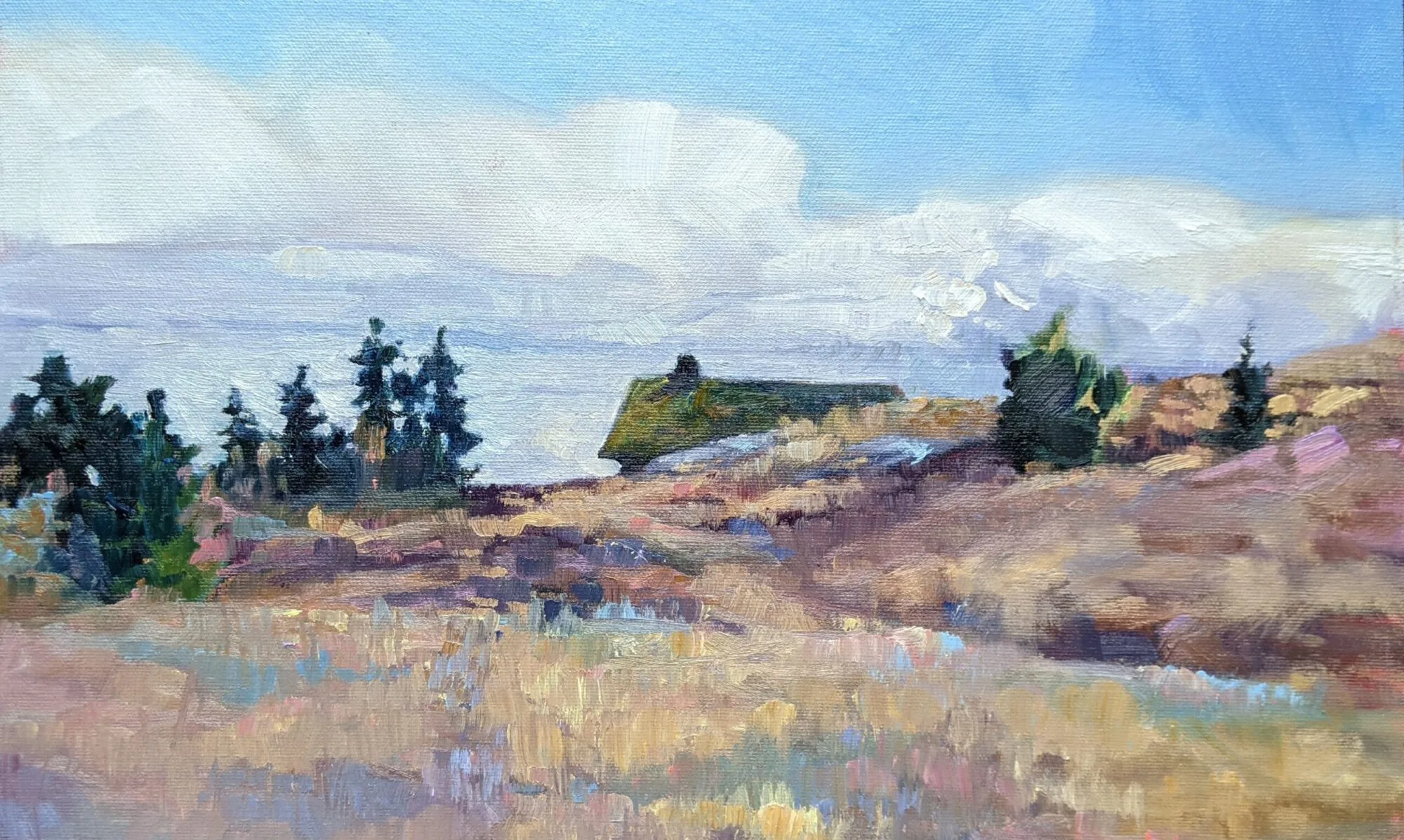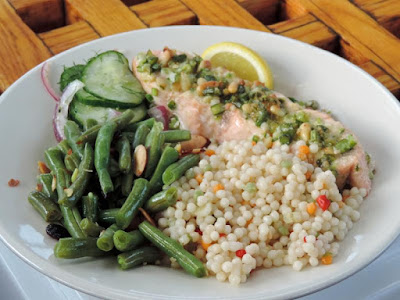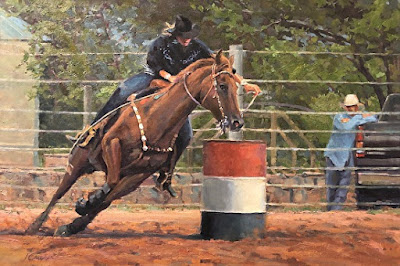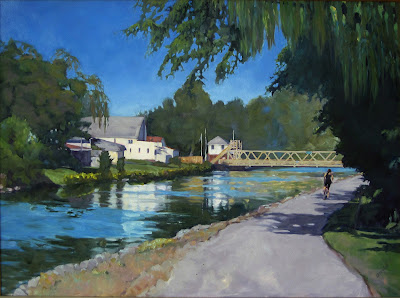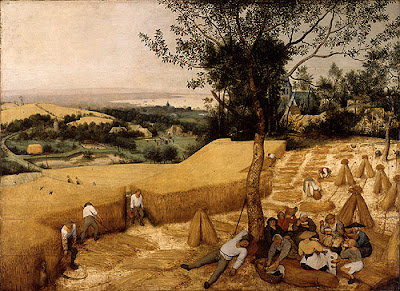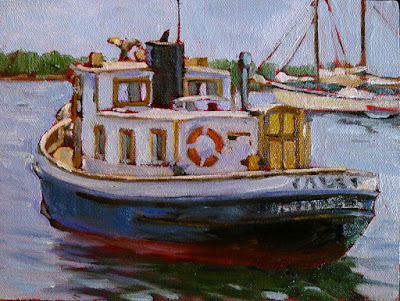If you’ve ever frosted a cake, you know how to use a palette knife.
 |
| Fishing village, by Carol L. Douglas |
Most of what we artists use on our palettes are what are currently called “painting knives.” A palette knife, in current parlance, is flat like a putty knife. The ones with cranked necks are, according to purists, painting knives.
That’s not a distinction based in practice. Nobody wants to scrape their knuckles either on the palette or on the canvas, so small flexible knives are better for nearly everything. However, you do need a knife with a crook in the neck to paint, and it should be steel and flexible. (You’ll never get any kind of results with a plastic one.)
 |
| This demo painting was done on top of an unfinished study I did in the rain in Corea, ME. I never got past the underpainting that day. You can see the original drawing at the top. |
Palette knife painting is an impasto technique, meaning it’s best done on top layers. Underpaint in the traditional way, with paint thinned with solvent. Here value is more important than hue. Because you may let certain areas of the underpainting show through, working with analogous colors in the underpainting can be good technique.
Excessive smearing in a palette-knife painting comes from either mixing your paints insufficiently or digging when you apply the paint. Either way, it takes away from the jewel-tone beauty of good palette knife painting. Thoroughly mix your colors before applying them. I add a drop of medium because I don’t want any oxidation in the top layers of my paintings. But limit it, because you can easily make the paint too thin.
 |
|
Human Ingenuity, by Cynthia Rosen, courtesy of the artist. Note the clean edges and lines Rosen is able to achieve with her knife.
|
If you’ve ever frosted a cake, you know how to hold the knife. You want new layers of paint to glide over what’s there. A light hand prevents digging. Wipe the knife clean after each color, because it takes very little color to contaminate a stroke.
As with paint brushes, use big knives for big, flat passages and little knives for detail. In general, you’re going to paint using the edge of your knife or by dragging the point.
Palette knives excel at hard edges. They can be added to a brush painting to give less-studied marks to things like power lines, blades of grass, etc.
 |
|
The Tide Pools, by Cynthia Rosen, courtesy of the artist. Note the pure colors, which were achieved by pre-mixing.
|
They’re also great for softening the edges where contrasting areas meet. For example, the traps in trees (sky holes) are easily made by floating the sky color across and over the tree-line. This is just a variation of the painting technique called scumbling, where a layer of broken color is added over other colors so that bits of the lower layers of color show through. Palette knives are also tailor-made for sgraffito, which just means scratching through the top paint layers to draw with an incised line.
One of the down-sides of palette-knife painting is the long dry time. You can’t paint over thick paint that’s not thoroughly cured. You’ll need to wait, often a significant amount of time, to rework passages.
This also affects the longevity of your work. If you layer thick paint with no respect to the “fat over lean” rule, it will be prone to cracking. A board is a better substrate, but if a canvas is necessary, you’re best off limiting the amount of paint you apply with a knife.
For those interested in further study of palette knife painting, I recommend
Cynthia Rosen. My students’ assignment this week was to study her paintings,
here. Note the clarity of her color (achieved by premixing), her incisive linework, and the drawing and composition that undergird her paintings. Everything that matters in brush painting also matters in palette-knife painting.
